
Tigh Na Coille cottage receives "Scandi-Scot" makeover
Hospitality company Wildland and Swiss designer Ruth Kramer have converted a former manse in the Scottish Highlands into a holiday cottage featuring a mix of classic Scandinavian furniture and traditional Caledonian details.
Tigh Na Coille, which is Gaelic for "house in the forest", is a four-bedroom property on a wooded hill overlooking Loch Ness in the Cairngorms National Park.
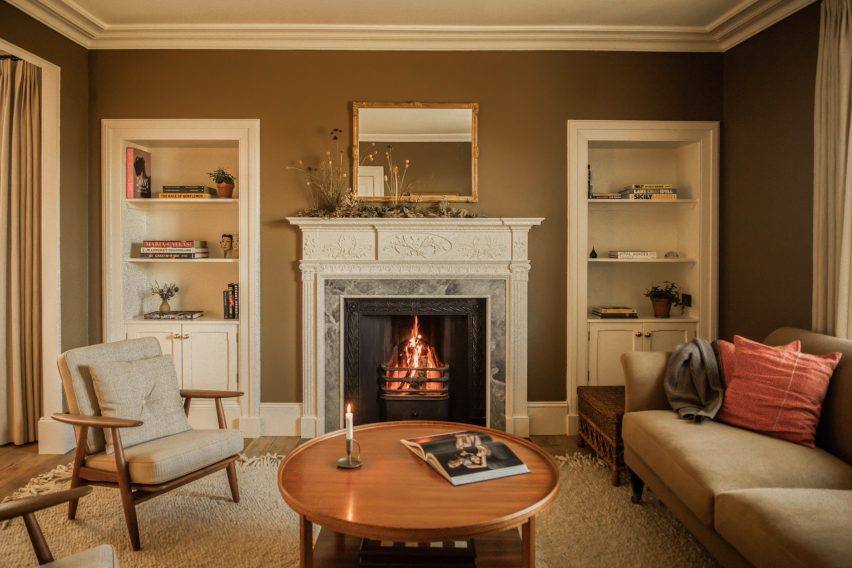
The 19th-century stone building was carefully restored and refurbished with help from Kramer, who has worked with Wildland on several of its historic properties.
Kramer coined the term "Scandi-Scot" to describe the way these buildings seek to combine Scandinavian simplicity with a playful take on Scottish heritage.
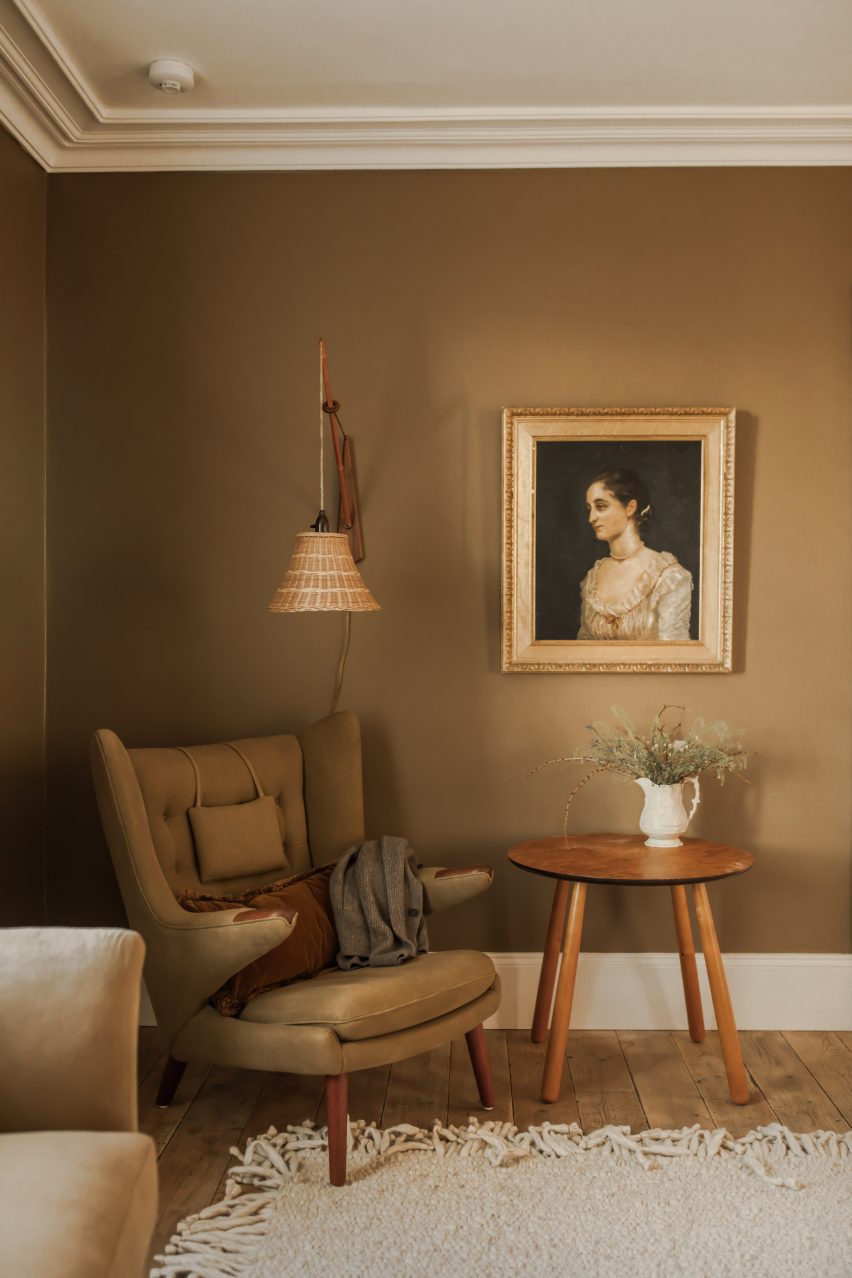
"Scandi-Scot is about creating a clean and modern aesthetic that weaves in elements of Scottish craftsmanship," she told Dezeen. "Everything is calm and natural, the colours don't scream at you and the furniture is comfortable like you're at home."
Tigh Na Coille was once a manse – a dwelling created for the Christian minister of a now-ruined church that stands on the grounds. The heritage-listed building was modernised by a previous owner and had lost much of its original character.
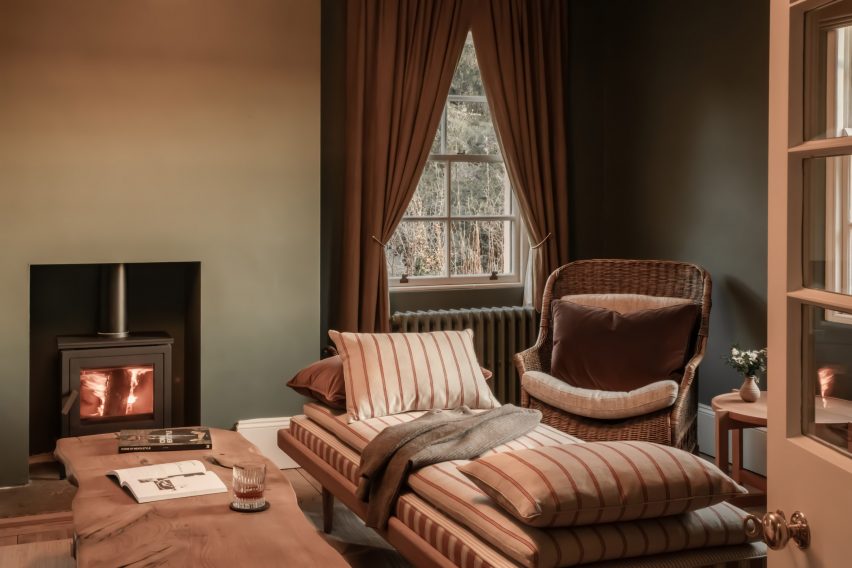
Kramer and Wildland development assistant Arthur Kirkwood preserved the layout of the rooms but the interiors were stripped back and redecorated, with original features reintroduced to bring an authentic feeling to the spaces.
The house is located on the Aldourie Castle estate, which Wildland renovated at the same time.
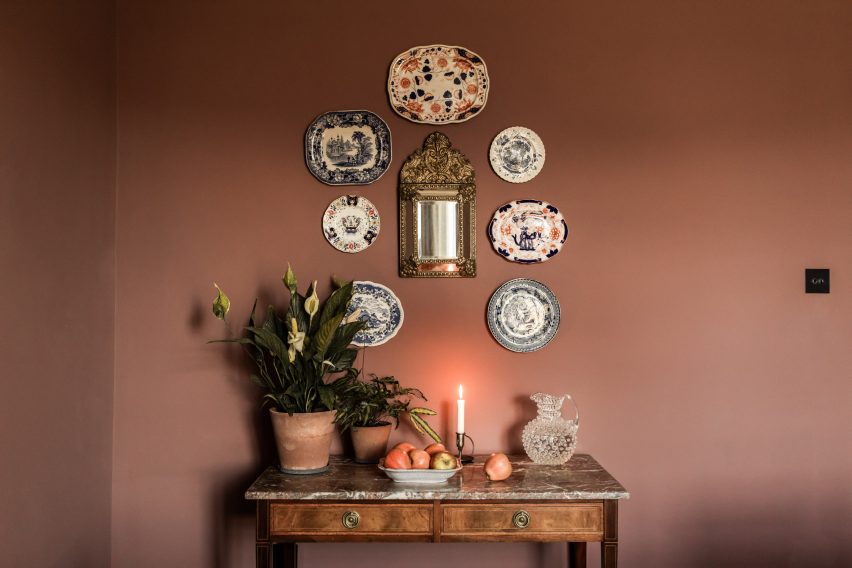
The refurbishment merges the Scandi-Scot aesthetic with nods to the castle's more traditional decor. Modern carpets and softwood flooring were replaced with oak floorboards salvaged from the castle, which add warmth and tactility to the spaces.
Several of the beds were also sourced from the castle and were refurbished by local joiners, who created new parts for the four-poster frames.
All of the bathrooms were completely remodelled and the kitchen was brought up to modern standards, with a new island unit providing an additional worktop in the centre of the room.
Fireplaces uncovered during the renovation were carefully restored along with the property's existing doors and windows, which were redressed to preserve their original appearance.
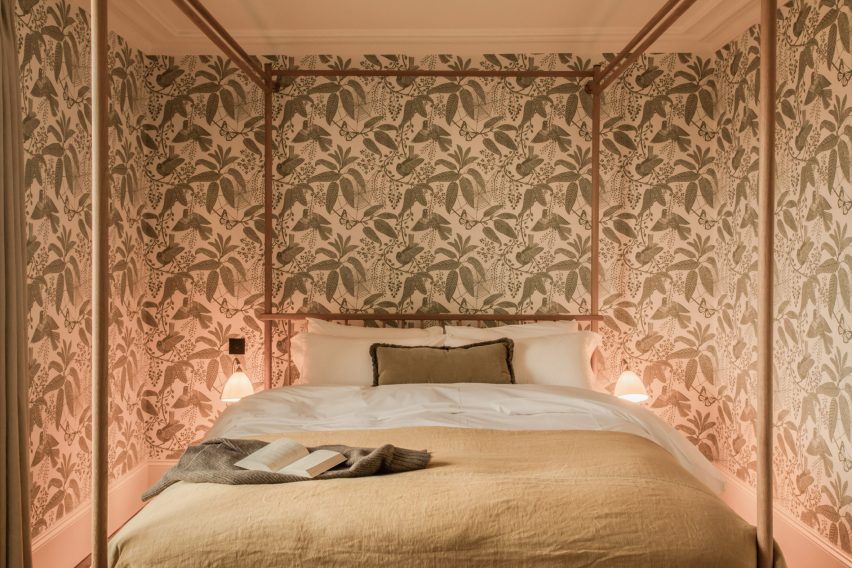
Over the years, various sections of the cornicing and architraves around the rooms had been replaced, so new parts were produced using mouldings taken from the original plasterwork.
According to Kramer, roughly half of the furniture was sourced second-hand and given a new life through bespoke joinery or reupholstery. The majority of the remaining pieces are vintage designs that add to the timeless feel.
"The ambition is that people walking into the house shouldn't be able to tell what is new versus what is original," she added. "We're going for an ageless look that will also become better over time rather than being fashion-led."

The centrepiece of the dining room is a vintage wooden table surrounded by midcentury chairs that were sourced at an auction and reupholstered using linen fabric and leather for the armrests.
Every Wildland property features one of Kramer's favourite furniture designs, the Papa Bear armchair created in 1951 by Hans J. Wegner and produced by PP Møbler.
At Tigh Na Coille, the chair sits in a corner of the living room where it has a view of the fireplace. A wall-mounted lamp provides gentle illumination for reading.
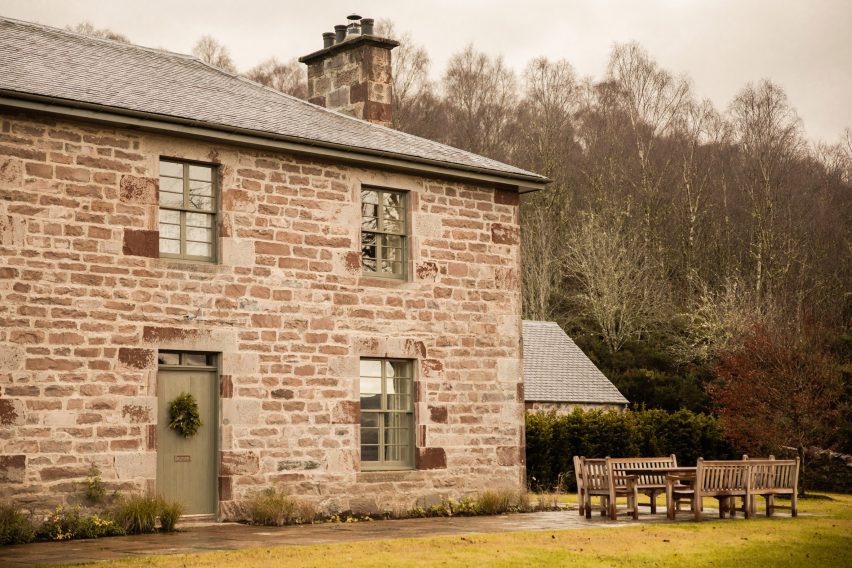
Kramer and Kirkwood collaborated closely on the project with Wildland co-owner Anne Holch Povlsen, the wife of Danish businessman Anders Holch Povlsen who made his fortune in the fashion industry with brands such as Bestseller.
Wildland owns three large estates in Scotland on which it operates hotels and self-catering accommodation as part of its 200-year vision to preserve the landscape and contribute to local communities.
The group's other properties include a formerly derelict cottage that was transformed into a pared-back holiday home by Edinburgh-based GRAS architects, and another converted manse that was converted into an art-filled guesthouse.
The photography is by Fran Mart.